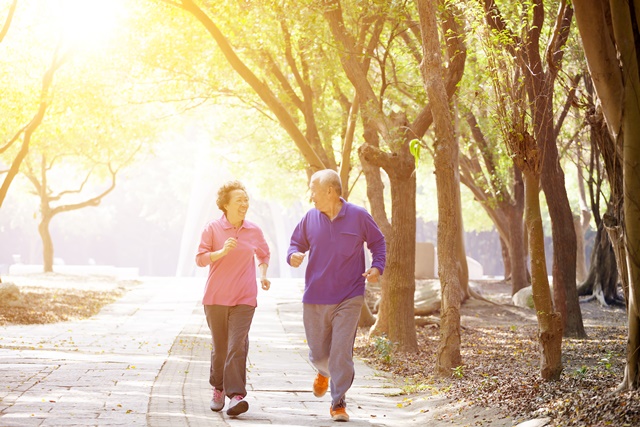
Physical activity boasts many quality benefits for all of us, and a key focus among the elderly is being able to reduce the risk of medical conditions and remain healthy in their golden years. There are various different fitness activities for the elderly that take it nice and easy, such as swimming – an extremely popular and rather soothing choice many seniors go for, and we can’t blame them. However, let’s tackle a question that is most commonly asked.
Is it Safe for the Elderly to Undertake Physical Activity?
When it comes to senior health, the question that is often raised is “is it safe for the elderly to undertake physical activity?” and this is all dependent on the health and safety of the individual. If medical conditions do exist and it is therefore unsafe for exercise to be undertaken, it’s definitely a hard no.
For seniors in care homes, specialist equipment will always be on hand to cater to the needs of elderly residents. Let’s take fall management equipment as an example, these reduce the number of falls and injuries which occur – and while these are effective and very useful, a little bit of exercise can also help and act as part of an ongoing solution to tackling fewer injuries.
Regular exercise among the elderly prevents chronic disease, reduces injuries and enhances their mood. One study has even suggested that an estimated 65% of the older population is sedentary for around 8 hours on a daily basis, while another says physical activity is medicine for older adults. With that being said, throughout this article we hope to inspire and showcase the positive impact exercise has, so get your walking shoes and your game faces on!

Image Credit: Pixabay
What are the best sports for seniors?
- Swimming – reduces the impact on the joints, it helps improve cardiovascular endurance and muscle strength
- Walking – walking is the easiest activity to get started with if you’re just venturing into the world of exercise
- Cycling – cycling is easy on the joints and acts a stress release. It also promotes balance, raises heart rate, strengthens muscles and helps with mental health.
- Golf – golf provides the benefits of cardiovascular activity, it also helps your joints
- Badminton – Court sports such as badminton, or even tennis, enhance and develop hand-eye coordination. This also reduces falls and other injuries that are common within the elderly
Every individual has specific needs, which is why it’s important to find an activity that meets your requirements and is something you can enjoy. So, if you fancy trying a spot of golf, or go for a few laps in a swimming pool, we don’t think you’ll run out of things to try anytime soon!
Promoting Safety
The primary focus of exercise and the elderly is to reduce injuries and physical and mental health issues. It’s essential to understand what exercise you can and cannot do and what is most beneficial. If you have a relatively sore back, for example, swimming would be your go-to activity. This is because it eases back pain and the water takes the stress of the joints. Moreover, while there are challenges that come with exercising if you have mobility issues, there are innovative and creative ways to overcome the difficulties and it doesn’t mean it’s any less fun!
How to Get Started?
Since you’re on the road to healthiness want to stay active, we thought we’d give you some useful tips on how to get started.
- Before starting any type of exercise, you should receive medical clearance from your doctor. You should also be aware if there are any activities that you should avoid.
- Consider pre-existing health issues
- If you develop any kind of pain through exercising, stop immediately and consult a doctor or health person
- You should always warm up and cool down after each exercise session
- Start your exercise off slow and then build it up if you feel as though you are comfortable
- Experiment with mindfulness – this can help improve your physical condition quicker, reduce stress and anxiety, and reduces accidents or injuries.
Exercise is known to prolong life and maintain functional independence for older adults. By participating in the regular activity, it helps lubricate the joints and helps reduce pain and stiffness, which many elderly patients tend to, unfortunately, suffer from. Senior fitness can really work wonders, so make sure you take our tips on board and put them to good use for yourself.
About The Author:
Abbie Faulkner is a professional writer and graphic design artist. Her key focus is to help bring people’s vision to life through different kinds of art.




![Managing Appetite Loss in Elderly Hospice Patients [LifeChoice's Expert Advice] Managing Appetite Loss in Elderly Hospice Patients](https://www.safeandhealthylife.com/wp-content/uploads/2023/05/Managing-Appetite-Loss-in-Elderly-Hospice-Patients-150x150.jpg)